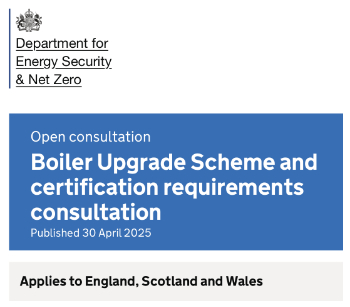Public project: business justification
 Business justification takes place once a business need has been identified which might result in a building project. It involves assessing whether there is justification for the project, preparing a preliminary business case and creating an organisational structure for the project.
Business justification takes place once a business need has been identified which might result in a building project. It involves assessing whether there is justification for the project, preparing a preliminary business case and creating an organisational structure for the project.
The Government Construction Strategy proposes that publicly-funded projects adopt either a design and build, private finance initiative (PFI) or prime contract procurement route. These routes involve contracting an integrated supply team (including designers, contractors and suppliers) to design, construct and sometimes finance, operate and maintain the development. Traditional procurement routes that separate design and construction should not be used unless it can be demonstrated that they offer better value.
Depending on how experienced the client is, they may appoint external consultants such as independent client advisers or a project manager to assist them. This means that some of the tasks attributed to the client below might actually be carried out by independent client advisers or a project manager and vice versa.
Publicly-funded projects are expected to commission independent peer reviews called 'gateway reviews' at key points during their development. This project plan follows the OGC (Office of Government Commerce) Gateway Review procedure. The OGC has now been absorbed into the Efficiency and Reform Group and its guidance archived, however, the OGC Gateway Review procedure is still cited by the Government Construction Strategy and remains the only complete reviewing system.
[edit] Confirming that the corporate strategy mandates a new project and considering options.
The client identifies a business need which might result in a building project and appoints a preliminary internal team to assess whether there is justification for the project. This should include a senior responsible owner (SRO) and project sponsor (PS).
The client prepares a statement of need, which is a first attempt to describe the possible requirements of the project. This may or may not result in the need for a project, and even if a project is necessary, it may not require a new building.
[edit] Preparing a preliminary business case.
Experienced clients may have in-house expertise allowing them to prepare a preliminary business case. However, some clients will not have the full range of skills required and may wish to appoint independent client advisers to assist them. Go to work stage: Public project: appointment.
The client explores high level options for meeting the requirements set out in the statement of need. This may include an assessment of comparable projects. They then prepare a preliminary business case, which is a first attempt to justify the investment required by the potential project and should include a management structure, draft legal agreements and funding options.
[edit] Gateway review 0: strategic assessment.
The senior responsible owner (SRO) commissions an independent peer review of the project: gateway review 0: strategic assessment. Gateway reviews are mandatory for central civil projects and best practice for the health sector, local government and defence projects. This is the first review and takes place before it has been decided to proceed with the project. It '... investigates the direction and planned outcomes of the programme' (Introduction to procurement: Gateway 0) . It is a programme review rather than a project review as at this stage it has not been decided whether a project is necessary.
The review team issues a confidential review report to the senior responsible owner who implements any actions necessary.
The client considers whether to proceed with a project.
[edit] Establishing an organisational structure.
The organisational structure for the project will have been defined and approved in the client's preliminary business case and may include:
- A project board to advise the senior responsible owner on technical and user matters.
- Champions (perhaps heads of departments) to take responsibility for the quality of the project.
- User panels to bring experience to briefing and design workshops.
- Project stakeholders that should be consulted during the early stages of the project.
[edit] Setting out the client's objectives and needs in sufficient detail to appoint independent client advisers.
The client assesses the nature of the independent client advisers that will be required to carry out feasibility studies and options appraisals, prepare a project brief and output-based specification and appoint the integrated supply team. The client may also wish to appoint a project manager.
The client develops the statement of need into an initial strategic brief which provides sufficient information about the project to allow the appointment of independent client advisers.
The initial strategic brief will include the identification of potential sites for the development. It should be noted that for particularly large projects, an environmental impact assessment may be required by the local planning authority and that this may include an assessment of alternative sites for the development. Identifying potential sites, and considering their impacts (such as the possibility of moving staff) can be a complicated process and may require the appointment of independent client advisers (such as surveyors). Go to work stage: Public project: appointment.
The client undertakes risk assessment and value management exercises, sets an initial budget for the project and considers funding options for the project. They may then revise the preliminary business case and strategic brief.
[edit] Gateway review 1: business justification.
The senior responsible owner commissions an independent peer review of the project: gateway review 1: business justification. Gateway reviews are mandatory for central civil projects and best practice for the health sector, local government and defence projects. This is the first project review (the gateway review 0 was a programme rather than project review). This review focuses on whether there is business justification for the project.
The review team issues a confidential review report to the senior responsible owner who implements any actions necessary.
The client considers whether to proceed with the project. Proceeding to the next stage may involve appointing independent client advisers to assist the client in carrying out feasibility studies and options appraisals, preparing a project brief and output-based specification and appointing the integrated supply team.
Featured articles and news
Licensing construction in the UK
As the latest report and proposal to licence builders reaches Parliament.
Building Safety Alliance golden thread guidance
Extensive excel checklist of information with guidance document freely accessible.
Fair Payment Code and other payment initiatives
For fair and late payments, need to work together to add value.
Pre-planning delivery programmes and delay penalties
Proposed for housebuilders in government reform: Speeding Up Build Out.
High street health: converting a building for healthcare uses
The benefits of health centres acting as new anchor sites in the high street.
The Remarkable Pinwill Sisters: from ‘lady woodcarvers’ to professionals. Book review.
Skills gap and investment returns on apprenticeships
ECA welcomes new reports from JTL Training and The Electrotechnical Skills Partnership.
Committee report criticises UK retrofit schemes
CIOB responds to UK’s Energy Security and Net Zero Committee report.
Design and construction industry podcasts
Professional development, practice, the pandemic, platforms and podcasts. Have we missed anything?
C20 Society; Buildings at Risk List 2025
10 more buildings published with updates on the past decade of buildings featured.
Boiler Upgrade Scheme and certifications consultation
Summary of government consultation, closing 11 June 2025.
Deputy editor of AT, Tim Fraser, discusses the newly formed society with its current chair, Chris Halligan MCIAT.
Barratt Lo-E passivhaus standard homes planned enmasse
With an initial 728 Lo-E homes across two sites and many more planned for the future.
Government urged to uphold Warm Homes commitment
ECA and industry bodies write to Government concerning its 13.2 billion Warm Homes manifesto commitment.
From project managers to rising stars, sustainability pioneers and more.
Places of Worship in Britain and Ireland, 1929-1990. Book review.
The emancipation of women in art.























